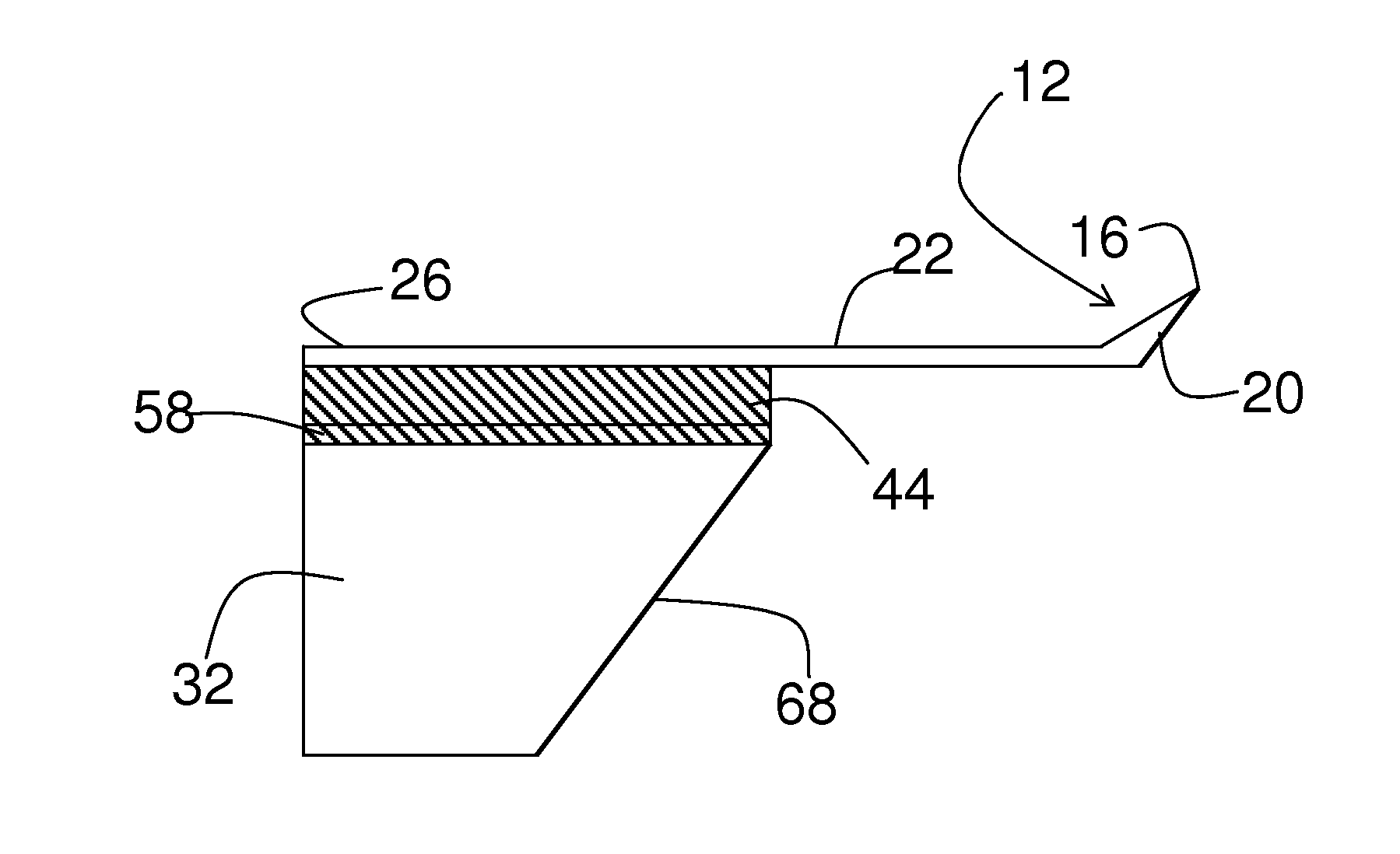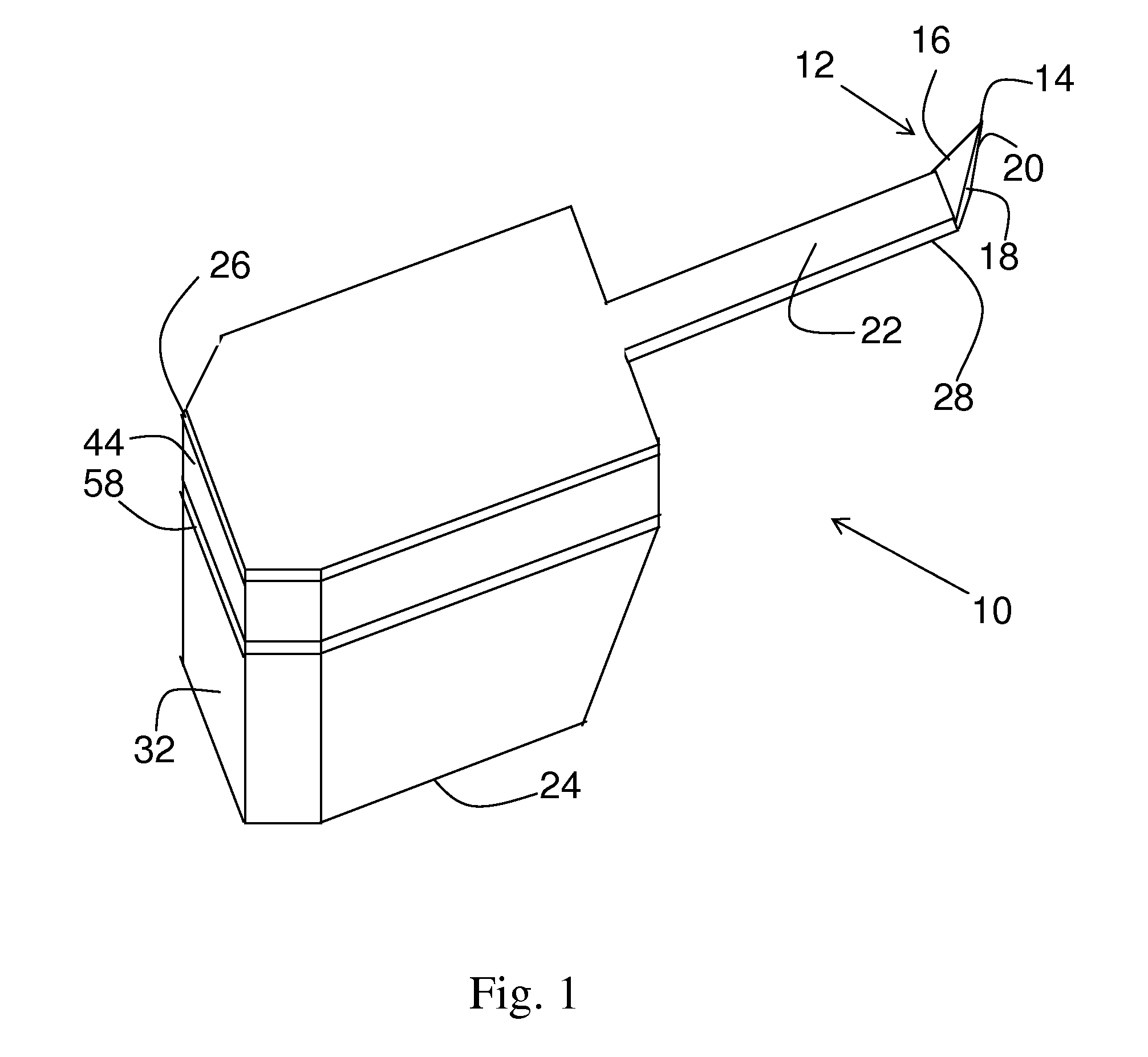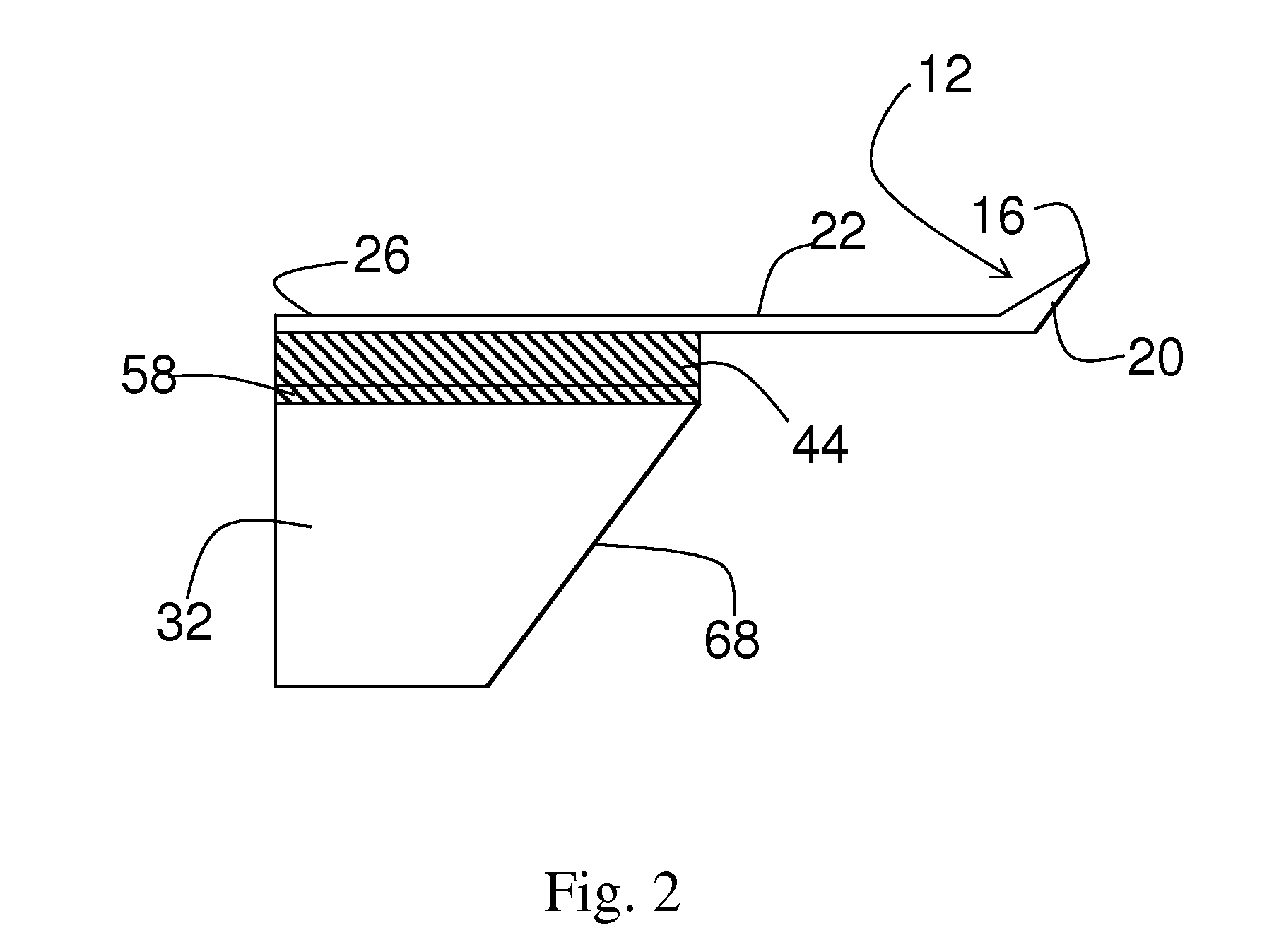Scanning probe having integrated silicon tip with cantilever
a technology of cantilever and scanning probe, which is applied in the direction of instruments, transportation and packaging, paper/cardboard containers, etc., can solve the problems of high level of control, difficult to define the exact thickness of the membrane, and inherent process difficulties
- Summary
- Abstract
- Description
- Claims
- Application Information
AI Technical Summary
Benefits of technology
Problems solved by technology
Method used
Image
Examples
Embodiment Construction
[0029]A probe assembly 10 of a first embodiment of the invention, illustrated in the orthographic view of FIG. 1 and the sectioned view of FIG. 2, may be formed by conventional processes well known for micro-electromechanical systems (MEMS). A triangular (tetrahedral) tip 12 terminating in a sharp apex 14 is formed of a first inclined surface 16 and two second inclined surfaces 18 separated by an inclined corner 20. The tip 12 extends upwardly and outwardly from a free or distal end of a cantilever 22, the fixed or proximal end of which is attached to and supported by a support 24. In this embodiment, the cantilever 22 is continuous with a cantilever layer 26 on top of the support 24. In use, the tip 12 points downwardly toward a sample being probed, but the opposite orientation is used here to clearly show the tip 12 and its formation. The support 24 is only partially illustrated and typically forms a support frame having an aperture over which the cantilever 22 and attached tip 12...
PUM
| Property | Measurement | Unit |
|---|---|---|
| angle | aaaaa | aaaaa |
| angle | aaaaa | aaaaa |
| angle | aaaaa | aaaaa |
Abstract
Description
Claims
Application Information
 Login to View More
Login to View More - R&D
- Intellectual Property
- Life Sciences
- Materials
- Tech Scout
- Unparalleled Data Quality
- Higher Quality Content
- 60% Fewer Hallucinations
Browse by: Latest US Patents, China's latest patents, Technical Efficacy Thesaurus, Application Domain, Technology Topic, Popular Technical Reports.
© 2025 PatSnap. All rights reserved.Legal|Privacy policy|Modern Slavery Act Transparency Statement|Sitemap|About US| Contact US: help@patsnap.com



